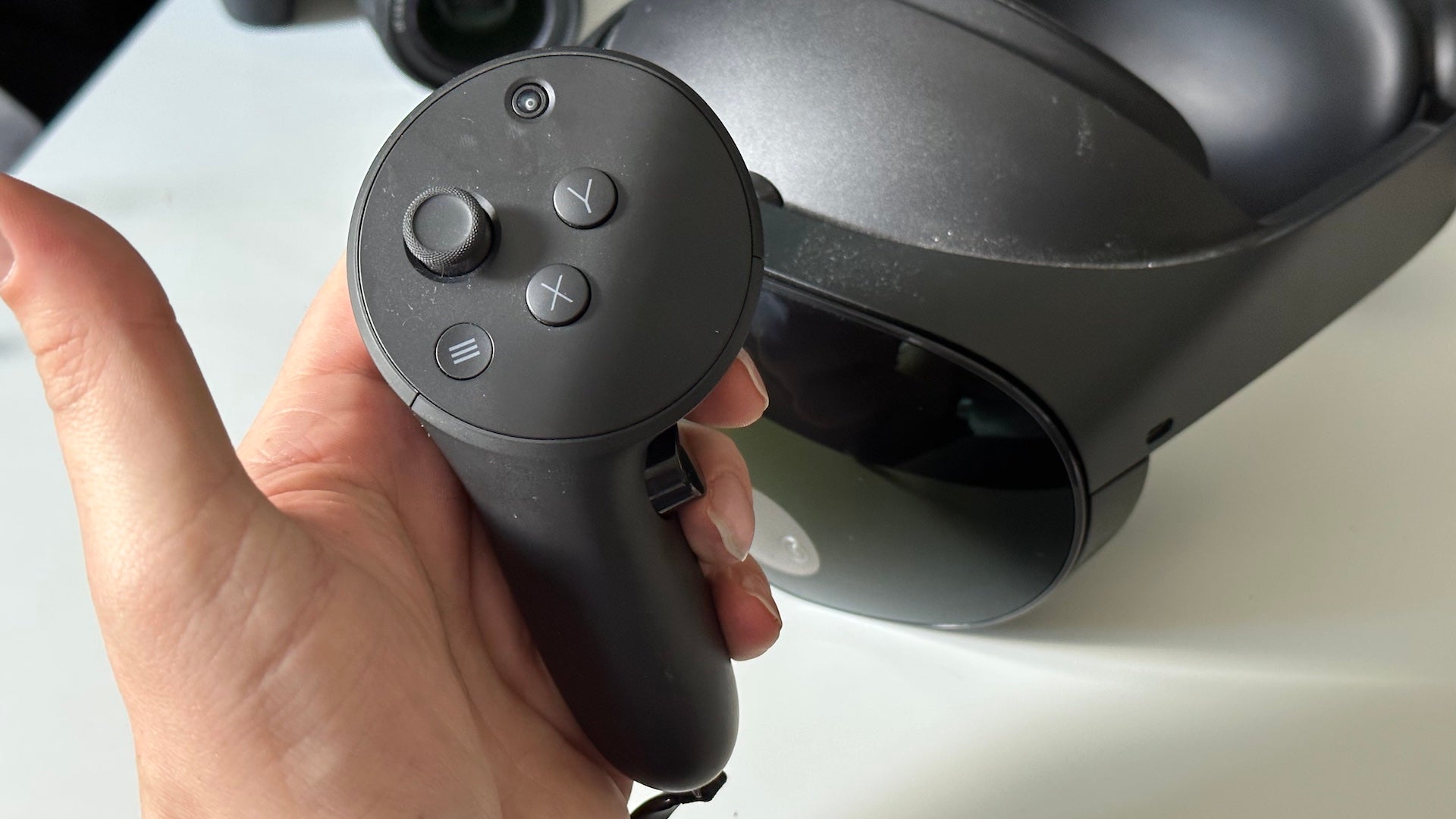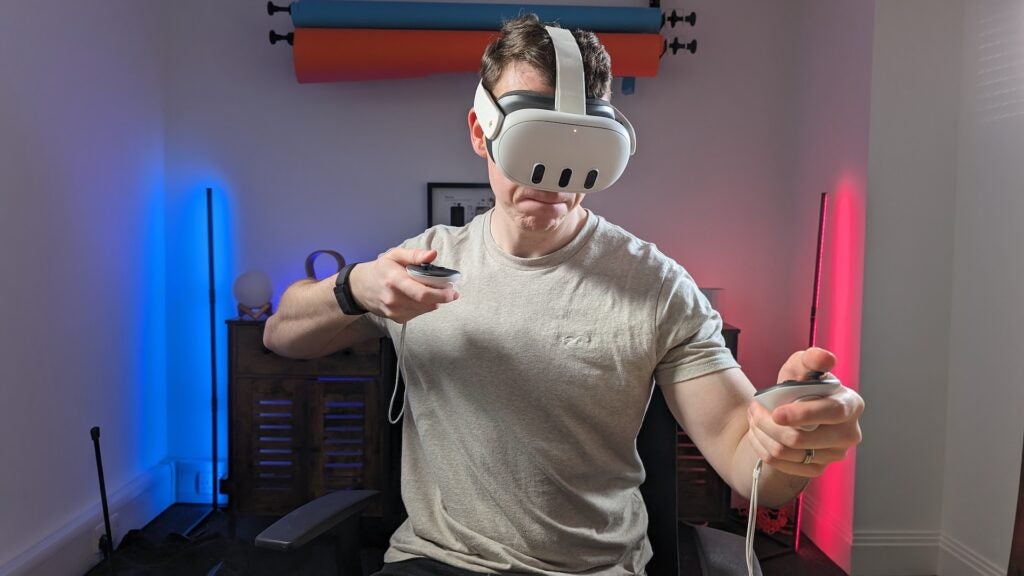Meta Quest 3 vs Meta Quest Pro: Which should you buy?

The Meta Quest 3 is one of the most popular standalone VR headsets around, but how does it compare to the premium Meta Quest Pro?
While you might assume that the ‘pro’ VR headset will offer an all-round more premium experience with better performance, more advanced features and more, that’s only half the truth. It’s complicated by the fact that the cheaper Quest 3 not only has a better processor, but the same high-end mixed reality capabilities.
The question is, then, do you really need to buy the Meta Quest Pro? We’ve spent plenty of time in the virtual world using both the Meta Quest 3 and Meta Quest Pro, and here’s how the two compare.
Pricing and availability
Although the Meta Quest 3 is comfortably more expensive than its predecessor, at £489/$499 with 128GB of storage, it’s still half the price of the top-end Meta Quest Pro, which comes in at a cool £999/$999.
In fact, it started at an even more premium £1,499/$1,499 before Meta dropped the price months later, possibly due to the lack of interest in such a high-cost headset.
Both headsets are available to buy now from various retailers in the UK and US, as well as Meta itself.
Design and controllers
Design is one area where the Meta Quest 3 and Meta Quest Pro differ quite drastically. The Meta Quest 3 is a continuation of the design of the Quest 2, which is to say that it’s shaped a bit like a pair of skiing goggles and fits onto your head with stretchy fabric straps – in its default form anyway.


The Meta Quest Pro, on the other hand, sports a rigid plastic headband with a crank mechanism to get the fit just right. The battery pack also lives in the back of the headset to help balance weight, an important factor considering the Quest Pro weighs in at a not-insignificant 772g– 257g more than the 515g Quest 3.
However, the biggest difference between them is that the Quest Pro doesn’t directly cover your face like most VR headsets do. Instead, the slimline HMD sits just in front of your eyes, with no kind of fascia to block the real world from your peripheral vision. This is done to facilitate more comfortable mixed reality experiences, and while it does come with side-blockers in the box for VR sessions, a full fascia – as you get with the Quest 3 – comes as an optional accessory.

Elsewhere, both headsets sport pancake optics that allow for a very slim HMD, especially noticeable from the jump from the Quest 2 to the Quest 3. They also sport USB-C and 3.5mm ports for headphones if the integrated open-air speakers don’t satisfy your needs.
The Meta Quest Pro’s controllers are notable not only because of their compact and ergonomic shape but also because of the tech within. Unlike the equally compact Quest 3 controllers, the Pro controllers sport a smattering of cameras to offer inside-out tracking independent of the headset.


This allows the Quest Pro controllers to continue delivering true 1:1 tracking even when out of sight of the headset, removing blind spots like reaching behind your head to grab a weapon in a VR game and marginally improving performance in fast-paced titles like Beat Saber. They’re also rechargeable, unlike the regular Quest 3 controllers, which require AA batteries to operate.
Features and performance
With the Meta Quest Pro costing practically double what you can pick the Quest 3 up for, it might surprise you to find out that the Quest 3 is actually the more powerful of the two with the Snapdragon XR2 Gen 2 chipset.
The Quest Pro, on the other hand, sports the slightly older Snapdragon XR2+ chipset, and it comes with a boosted 256GB storage as standard.

That means that the Quest 3 offers serious performance gains that give it the edge when running virtual titles. The pancake optics and enhanced resolution of the Quest Pro do help it compete somewhat, but it can’t render the same high-quality textures and new particle effects that the Quest 3 can.
Instead, the Meta Quest Pro justifies its price with high-end eye- and face-tracking seen by the likes of the $3,500 Apple Vision Pro. This allows you to better express yourself in social VR with non-visual cues, ideal for virtual business meetings and the like that Meta envisions with the Pro headset.

It certainly makes for a more natural experience, but to truly benefit, those you interact with also need the Quest Pro. Otherwise, they’re seeing your expressive face while you’re met with the same old blank gaze.
Both headsets also feature improved hand-tracking capabilities, and with a plethora of games and apps supporting the tech, it’s way more useful than the Pico 4 which only allows hand-tracking in the Home UI.
Elsewhere, both the Meta Quest 3 and Meta Quest Pro offer colour passthrough and mixed reality capabilities. The same MR apps work across both headsets, along with the same vast library of VR and MR titles – over 500 at the time of writing.
This is arguably the main reason to opt for a Meta headset in general, with competing standalone headsets like the Pico 4 and HTC Vive XR Elite lacking killer VR titles like Beat Saber.
Battery life and charging
When it comes to battery life, the cheaper Meta Quest 3 has the upper hand – though this mainly comes down to the face- and eye-tracking of the Meta Quest Pro using up a fair portion of the headset’s charge, as it’s rated to last between 90 and 120 minutes on a charge with the features active.
It can be extended to match the Quest 3’s 3-hour battery life by disabling the tech, but that effectively means you’re disabling one of the few USPs of the top-end headset. Kind of defeats the purpose, right?

The Quest Pro does have one redeeming feature though; simple charging. The top-end headset comes with a charging dock that you can place both the controllers and headset onto for easy wireless charging. It’s a much more convenient option than the regular USB-C charging used by the Quest 3 and the replaceable AA batteries required by the accompanying controllers.
You can, however, buy third-party Quest 3 accessories that mimic the functionality, helping bridge the gap without forking out for the top-end headset.
Final Verdict
While some dedicated VR fans will no doubt be tempted by the face- and eye-tracking of the Quest Pro, the headset’s price – and the fact that the Meta Quest 3 is half the price while offering better performance – means that the Quest Pro will remain a niche in Meta’s VR collection.
For most people, the Quest 3 is the better option. This is further supported by the fact that third-party accessories can match elements of the Quest Pro’s design, from the rigid headband to wireless charging, all at a cheaper cost.








